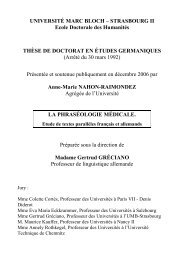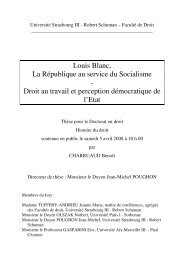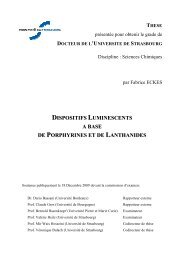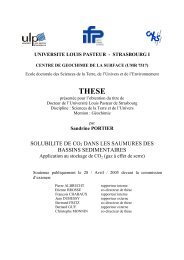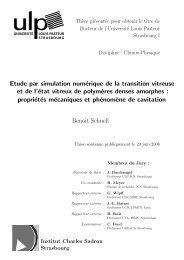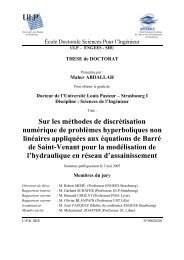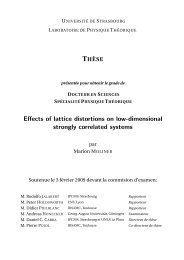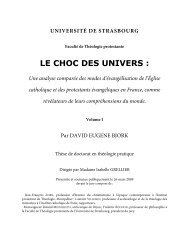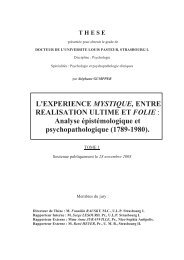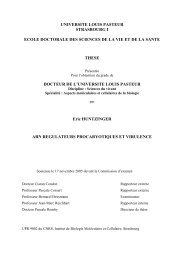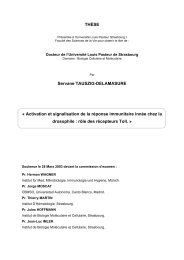Anthony KERMAGORET - THESES ET MEMOIRES DE L'UDS
Anthony KERMAGORET - THESES ET MEMOIRES DE L'UDS
Anthony KERMAGORET - THESES ET MEMOIRES DE L'UDS
Create successful ePaper yourself
Turn your PDF publications into a flip-book with our unique Google optimized e-Paper software.
Chapitre II<br />
solubility of 15 in chlorobenzene could explain its very low activity with 2 equiv. of<br />
cocatalyst (less than 1000 mol C2H4/(mol Ni·h)). Indeed, more than 2 equiv. of AlEtCl2 are<br />
needed to form sufficiently soluble, active species in the catalytic solution.<br />
In contrast to 15, complexes 14 and 20 were soluble in chlorobenzene and showed<br />
high activities with 2, 4 or 6 equiv. of AlEtCl2 (Table 3). The highest activities were observed<br />
with 6 equiv. of AlEtCl2: 187500 and 99800 mol C2H4/(mol Ni·h) with 1.05×10 -2 mmol of<br />
complexes 15 and 20, respectively. The selectivities for C4 olefins and 1-butene with<br />
complexes 14, 15 and 20 decreased with increasing catalytic activity (Table 4). Complex 15<br />
presented the best selectivities for C4 olefins (up to 87%) and for 1-butene (up to 97%) with 2<br />
equiv. of AlEtCl2 (Figure 5). The isomerization of 1-butene to 2-butene became more<br />
important with increasing activities. However, a decrease of the concentration of catalyst<br />
from 4×10 -2 to 1.05×10 -2 mmol had a beneficial impact on the selectivity for 1-butene, as<br />
shown with 20 where the selectivity increased from 6% to 29%.<br />
The low selectivity for C4 olefins with very active catalytic systems could be<br />
explained by the competing reinsertion of 1-butene to form 2-hexene, 3-hexene and 2-ethyl-<br />
1-butene and the reinsertion of 2-butene to form 3-methyl-1-pentene and 3-methyl-2-<br />
pentene. 53 Table 4 shows that with 1.05×10 -2 mmol of precatalyst, less branched oligomers<br />
are formed than with 4×10 -2 mmol of precatalyst, suggesting that a lower catalyst<br />
concentration disfavored the reinsertion of olefins. Accordingly, increasing the amount of<br />
cocatalyst favored the reinsertion of olefins and resulted in an increase of the C6 fraction<br />
(Table 3), in particular of the C6 oligomers formed from 2-butene (Table 4).<br />
12



